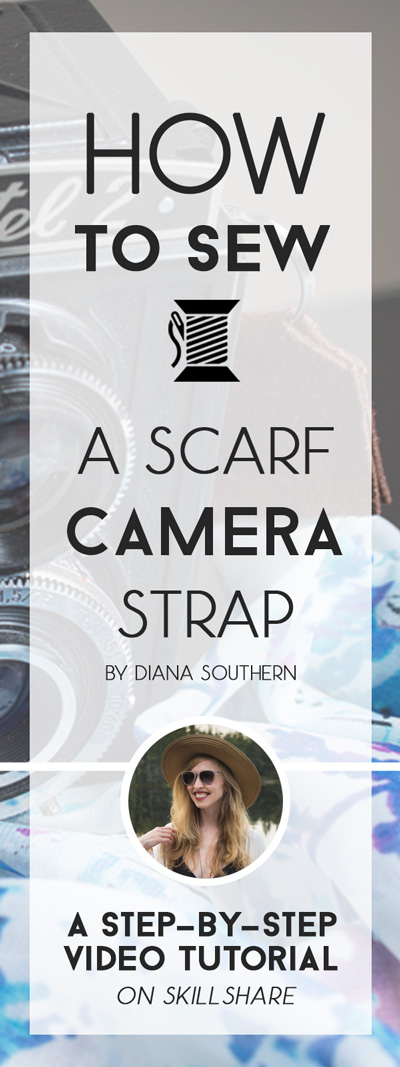
Wedding Planning for the Bride On the Go — Getting Started and Setting a Date
Newly engaged and feeling overwhelmed with planning pressure? You’re not alone! That was me, about a year ago. Excited, yet overwhelmed. My husband (as of three weeks ago!) Ian and I got engaged last August and immediately found ourselves fielding question after question about our upcoming wedding — when we hadn’t even discussed a date or location ourselves. The more questions asked, the more overwhelmed I became, and the less I felt ready to take the dive into planning. With enough on our plates with our travels and online businesses, for nearly five months, we didn’t plan a single thing.
If you’re not one of those girls who’s been planning your wedding since you were eight, rest assured you’re not alone. Not every girl is ready to jump right into wedding planning the moment after she’s said ‘yes.’ Maybe you’re super busy. Perhaps you travel full time (like me). Or maybe there are just so many factors to consider that you don’t know where to begin. If you find me speaking your language here, I can help.
Feeling ready to start will set the stage for a fun, low-stress planning process. So, whenever you’re ready, here’s my advice for how to get started. Take as much or as little time as you need on these first few steps, because once you set a date, planning may take up a lot of your free time.
Getting Started
1. Identify what’s most important to you and your fiancé.
Whether it’s a wedding on a particular date or in a particular season, inviting everyone you know, or having your favorite band play on your big day, discuss what’s most important to each of you. The most important thing(s) can help you determine your timeline/date and the budget required to get what means most to you. There are very few factors that will require you to rush your wedding (more will require the opposite), but if one applies to you, the earlier you identify it, the better.
The budget conversation will likely bounce you back to this step several times in the wedding planning process, so having a solid list — in order of importance — will be extremely helpful in decision making.
2. Get a general timeframe, location, and size in mind.
If you know you and your fiancé are extremely busy people, it’s okay to take your time planning! Wedding planning websites will tell you the average length of an engagement, but honestly, who cares? The most important thing is that you both feel comfortable with your planning timeframe.
Think about whether a particular season or date is important to you, and determine whether you’re willing to be flexible if budget is a concern. If you have the budget to hire a planner, you can accomplish more in a less time, but if you’re tackling the planning part yourselves, build in more lead time so planning doesn’t have to take over your lives in order to get done on time. Planning is probably going to take more time than you think, so building in extra time is always a good idea.
Along with timeframe, consider your ideal wedding location. Do you want a destination wedding or a wedding in your hometown? A location that is reasonable for your most important guests to be able to attend? What type of setting do you envision for your big day? Consider what season is best for the location you have in mind.
Lastly, discuss your wedding size. Whether you’re imagining a large or small celebration, make a list of the people you want to invite — this may or may not involve input from family — and finalize a number (or range) to make venue searching easier.
3. Talk about budget and create a budget outline.
Your budget will play a big role in almost every aspect of your planning, so it’s important to get this conversation going before any big decisions are finalized. If your parents are paying for or contributing funds to your big day, find out what their limit(s) are. If you and your fiancé are covering any or all of the bill, discuss what you’re comfortable with.
The budget conversation may start with calculating how much the wedding you have in mind will cost and going from there. Unfortunately, you can’t just Google “how much does a wedding cost” and expect to get an accurate answer for the exact wedding you have in mind. It’s time to do a little quick research and create a budget outline.
Since I do everything online, I used the ‘Wedding planner’ spreadsheet template in Google Sheets to plan our budget and almost everything else for our wedding. View a sample of the template here (un-editable), or use Google Sheets with your Google account to locate the template and modify it for your wedding.
I used WeddingWire to get an idea of the price range of well-reviewed vendors in the area where we planned to get married. (It’s as easy as searching for “florist” by zip code and then scrolling through a list that shows the vendors’ rating and typical price.) This allowed us to quickly fill in realistic numbers on our budget spreadsheet. TheKnot is also worth searching and cross-referencing.
Search for: venue, caterer, bartender, florist, event rentals (tables, chairs, dishes, silverware, glassware, draping, linens, signage, etc.), cake, hair and makeup artists, photographer/videographer, band or DJ and sound/lighting.
Don’t forget to budget for the dress, tux, rings, accessories, alterations, invitations, vendor tips, and bridesmaid/groomsmen gifts.
Other things you may want to budget for include: wedding coordinator, stationer, hotel (if out of town), alcohol, shuttles, wedding favors, programs, dance lessons, wedding insurance, and specialty rentals (vintage furniture, lawn games, etc.).
If your budget isn’t big enough to realistically cover what’s most important to you (and everything else you’ll need for your wedding), you may consider a longer engagement to save enough money to get exactly what you want. You may also consider adjusting your timeline to help your budget; many venues (and some vendors) offer significantly lower rates at off-peak times or on lower-demand days of the week.
Setting a Date
When you’re ready, set the date.
All of the research and pondering you’ve put in so far should culminate in you being able to set a date.
Start by inquiring about upcoming availability for your ‘most important’ vendor(s) for the timeline you’ve set, and find out what you need to do to secure them — usually a deposit and a signed contract for a specific date. If you’ve got two vendors high on the “most important” list, run your potential date(s) by both before signing a contract with either.
If your venue wasn’t a top priority, it’s time to make it your next one. When you’ve officially booked your venue, you’re ready to send Save the Dates! (These usually include your names, the date and city where your wedding will take place, and your wedding website.)
What The Beginning Stage of Wedding Planning Looked Like For Me
In December, post-Christmas, after almost five months of engagement, Ian and I officially began “wedding planning.”
We decided that the most important thing to us was having a picturesque outdoor setting where many of our friends and family would be able to come celebrate our wedding day with us. Photography/videography came in a close second — great visuals were important to us to help us remember our big day! We wanted at least nine months to plan, and we wanted the weather at our outdoor wedding to be comfortable, so we set a general timeframe of getting married in early fall. We had no idea what to expect for cost, so we decided to venue search before setting a detailed budget.
I began researching venues, and we decided that Ian (being a photographer himself) would find our photographer once we determined our venue location. I didn’t know exactly where or what we were looking for when I began searching — we knew more what we didn’t want than what we did — but we figured it out in the process of research. I sent a lot of email inquiries and got several questions answered to nail down our favorites. Then we scheduled venue tours and planned a mini road trip to see our top three venue choices.

Our wedding venue, Oyster Ridge at Ancient Peaks Winery, in December
We chose the third venue we toured, one that allowed us plenty of control over our budget. We got a list of available dates for the late summer and early fall, and we picked a date in mid-September. We had two weeks to get our deposit in while our date was held, so Ian started researching local photographers around our venue. With a short list of recommended photographers provided by our venue, we looked at each of their portfolios, but it was proving difficult to find a team that was good at both photography and videography. Our conversations kept coming back to the photo/video team we’d met at my friend’s wedding in St. Louis the year before, so we decided to reach out just to see if they were available. When we heard back that they were, we decided it was worth the splurge to fly them in from out of town.
We signed both our venue and photo/video contracts and put down our deposits within a couple of weeks. And thus our wedding planning had officially begun. We now had a venue, one vendor, and a date!
We ordered and sent out our Save The Dates in January — and then promptly put off additional planning until late spring while we accomplished other important things like purchasing and furnishing our condo and spending a month abroad in the UK.
A Preview of What’s Next
Stay tuned for more wedding planning sharing! I’ll be posting more about this process — including whatever helpful tips I think I can offer — in the coming months. I haven’t fully planned this series, but here’s a sample of what’s to come:
- Save The Dates: Why You Need Them and How to Do Them Right
- Wedding Planning from Afar: How to Choose Vendors from Thousands of Miles Away
- 10 Wedding Things that are Easy to Plan Online
- How to Make Your Love for Travel a Part of Your Wedding
- 5 Wedding Things that Take Longer Than You Might Expect
- How Much Time Does it Take to Plan a Wedding?
- Wedding Planning Like a Boss: How to Hire the Best Vendors for Your Wedding
Author Profile
- STG Founder & Contributing Editor
- Diana is an outspoken, DIY-ing, star-chasing, hockey-loving, dog-owning, veggie-eating professional wanderer. And that's not the half of it. Not long ago she jumped ship from a comfy, predictable American life, sold all her stuff, and set out to explore the unknown. Now a full-time traveler, Diana believes that spontaneity, a smile, and an organized suitcase are the three key elements to a happy nomadic existence. Follow her personal travels on North To South.
Latest entries
- June 22, 2017WeddingWedding Planning for the Bride On the Go — Getting Started and Setting a Date
- February 27, 2017Health and BeautyFirst-Timer’s Guide to Iceland’s Blue Lagoon
- October 5, 2016FashionCozy Cute Camping in New Zealand (Outfit)
- July 3, 2016Editor's PicksLupine Summer (Outfit)






